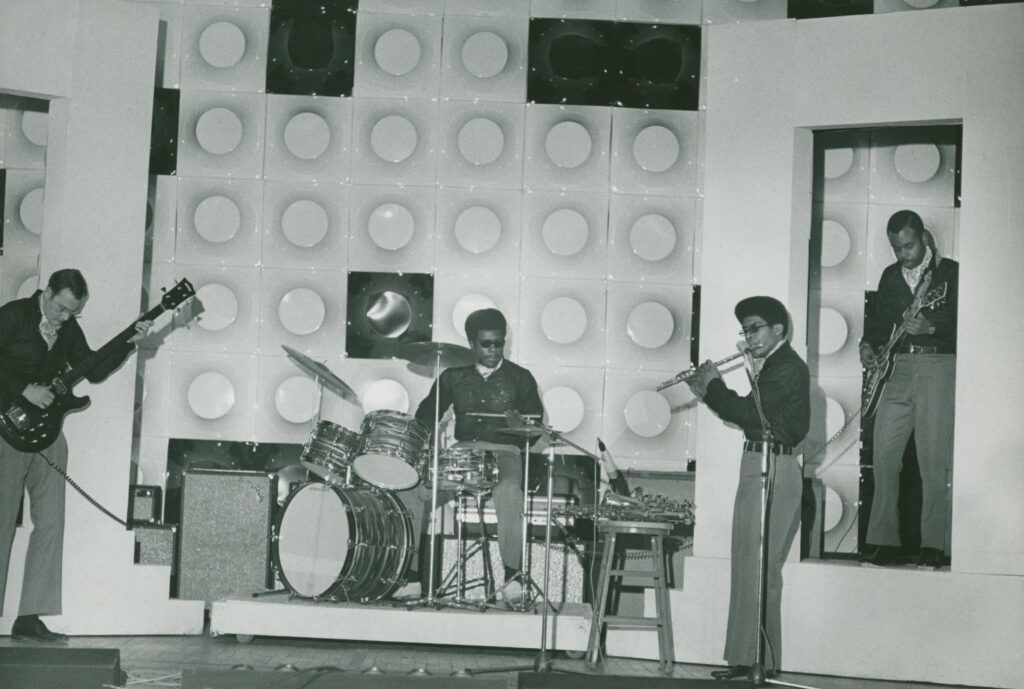Rock music, the genre that continues to define and shape popular culture, has a rich and dynamic history. From its humble beginnings in the late 1950s to the multifaceted and ever-evolving sound we hear today, rock music has continuously adapted and redefined itself, making it a true force in the music world.
In this article, we’ll take a journey through the decades to explore how rock music has evolved and how it has impacted generations of listeners, musicians, and culture at large:
- The 1960s: The birth of Rock and the role of British bands
- The 1970s and 1980s: Hard Rock, Glam Rock, and the birth of Metal
- 1990s to present: The Rise of Alternative, Grunge, and the digital era
- The cyclical nature of rock and its adaptability across decades
The 1960s: The birth of Rock and the role of British bands
The late 1950s saw the birth of rock music, with artists like Chuck Berry, Little Richard, and Elvis Presley bringing a new sound to the airwaves. But it wasn’t until the early 1960s that rock truly began to take shape as we know it today. The genre evolved from a blend of rhythm and blues, country, and gospel, creating something new and exciting that captured the imagination of young people all over the world.
In the UK, rock began to take on a distinctive form, with British bands like The Beatles, The Rolling Stones, and The Who leading the charge. The British Invasion, as it came to be known, saw these bands take America by storm, changing the course of rock music forever. The Beatles’ revolutionary approach to music, blending harmonies, innovative recording techniques, and introspective lyrics, was a game-changer. Their influence stretched far beyond their music, affecting fashion, culture, and youth movements.

Meanwhile, The Rolling Stones introduced a raw, rebellious energy that spoke to the restless youth of the time. Their gritty sound and swagger were a perfect contrast to the polished pop that dominated the charts. The Who, with their explosive live performances and anthems like “My Generation,” captured the spirit of defiance and youthful angst that would become a hallmark of rock music in the years to come.
By the end of the 1960s, rock had grown from a new and experimental genre into a global phenomenon. The Woodstock Festival in 1969 solidified rock as not just a genre of music but a cultural movement, symbolising peace, love, and the countercultural revolution.
The 1970s and 1980s: Hard Rock, Glam Rock, and the birth of Metal
As the 1970s rolled in, rock music continued to diversify and evolve. The era saw the rise of hard rock, glam rock, and the birth of heavy metal, as bands experimented with louder, more aggressive sounds and more elaborate performances. Led Zeppelin, Black Sabbath, and Deep Purple laid the groundwork for the heavy metal genre, with thunderous guitar riffs and a darker, more theatrical approach to music. Bands like these weren’t just musicians; they were larger-than-life rock gods, and their concerts became spectacles in their own right.
At the same time, glam rock emerged as a flamboyant and androgynous movement, with artists like David Bowie and T. Rex pushing the boundaries of fashion, performance, and musicality. Bowie’s alter ego, Ziggy Stardust, became a cultural icon, blending rock with theatre, fashion, and art. Glam rock’s eccentricity, theatricality, and glittery outfits paved the way for future generations of artists to use music as a platform for self-expression.
The 1980s saw the continuation of rock’s evolution, with the rise of stadium rock and arena bands like Queen, U2, and Bon Jovi. These bands embraced a larger-than-life sound, with anthemic choruses and massive soundscapes, which were perfect for large arenas and festivals. The 1980s also marked the rise of the synthesizer, with new wave bands like Duran Duran and Depeche Mode incorporating electronic elements into rock music, leading to the birth of new subgenres like synth-pop.
However, the most significant development of the 1980s was the birth of punk rock. Emerging from the gritty streets of New York and London, punk was a reaction to the excesses of mainstream rock. Bands like The Ramones, The Sex Pistols, and The Clash embraced simplicity, speed, and rebellion. With raw, stripped-down sounds and anti-establishment lyrics, punk rock created a new ethos that would influence generations of musicians and fans alike.

1990s to present: The Rise of Alternative, Grunge, and the digital era
The 1990s brought about a seismic shift in rock music with the rise of alternative rock and grunge. Bands like Nirvana, Pearl Jam, and Soundgarden brought a raw, gritty, and introspective sound to the forefront of popular music. Grunge, with its distorted guitars, anguished lyrics, and unpolished sound, became the voice of a disillusioned generation. Nirvana’s “Nevermind” became a landmark album that not only defined the grunge movement but also shifted the musical landscape of the entire decade.
As alternative rock continued to grow in the 1990s, new subgenres like indie rock, post-punk revival, and Britpop began to emerge, with bands like Oasis, Radiohead, and The Strokes ushering in a new era of rock that was more experimental and diverse. Radiohead’s “OK Computer” redefined what rock music could be, mixing electronic influences with traditional rock instrumentation to create a hauntingly futuristic sound.
As the 2000s and 2010s arrived, rock music faced new challenges. The rise of digital streaming and social media meant that music consumption was changing rapidly. However, rock bands continued to adapt. The digital age brought about new ways for bands to connect with their fans, share their music, and reach global audiences. Social media platforms like Twitter and Instagram became vital tools for building fanbases, while streaming services like Spotify changed the way people discovered and listened to music.
In the 2010s, rock music began to split into even more niche subgenres. From the indie rock revival spearheaded by bands like Arctic Monkeys, to the rise of electronic influences in rock, bands continued to push the boundaries of what rock music could be. Modern rock bands, while still rooted in the traditions of the past, are increasingly incorporating elements from hip-hop, electronic music, and pop, resulting in a more diverse and eclectic sound.
The cyclical nature of rock and its adaptability across decades
As we look back at the evolution of rock music, one thing becomes clear – rock is not just a genre; it’s a living, breathing entity that has evolved in response to the cultural, technological, and social changes of each era. From the rebellious sounds of the 60s to the experimental and digital-driven rock of today, rock music has remained adaptable and relevant, always finding new ways to resonate with listeners.
Let’s recap what we’ve learned today:
- Rock music is a genre that shapes and influences pop culture and has been doing so for decades
- The 1960s were a decade full of change: Chuck Berry, Little Richard, and Elvis were the voices of Rock’n’Roll.
- The UK played an integral role in shaping that decade: The Beatles, The Rolling Stones, and The Who led the charge that would leave rock music changed forever.
- The Woodstock Festival in ‘69 solidified rock as a genre
- The 1970s and 1980s saw the emergence of Glam Rock and Classic Rock as a leading source of popular songs.
- The characteristic synth sounds found their way into a lot of tracks in the 80s.
- In 1990 Grunge became a widespread genre with Nirvana leading the charge
- With the rise of first digital music formats and then streaming in the 2000s and 2010s, music was facing challenges
- Instead of buying round players or even CDs, people didn’t have to leave their houses to get the newest
- As much as it changed music history forever, music streaming also brought new chances for the industry: Better reach for smaller bands, social media on the rise to promote upcoming tour dates and albums, cheaper merch options and advances in technology
- Rock music in the 60s meant rebellion, today it’s part of the ever-changing fabric of the music industry just as much as any other genre
That’s what’s fascinating about rock music is its cyclical nature: Over the decades, it has consistently reinvented itself, drawing on past influences while pushing forward into new territories. From its rebellious beginnings to its current digital landscape, rock music proves that no matter how much things change, the spirit of rock remains as strong as ever. Whether you’re listening to classic albums from the 70s or discovering new artists on Spotify, rock music continues to be a vital force in the cultural landscape – a genre that refuses to be confined by time or trends.







